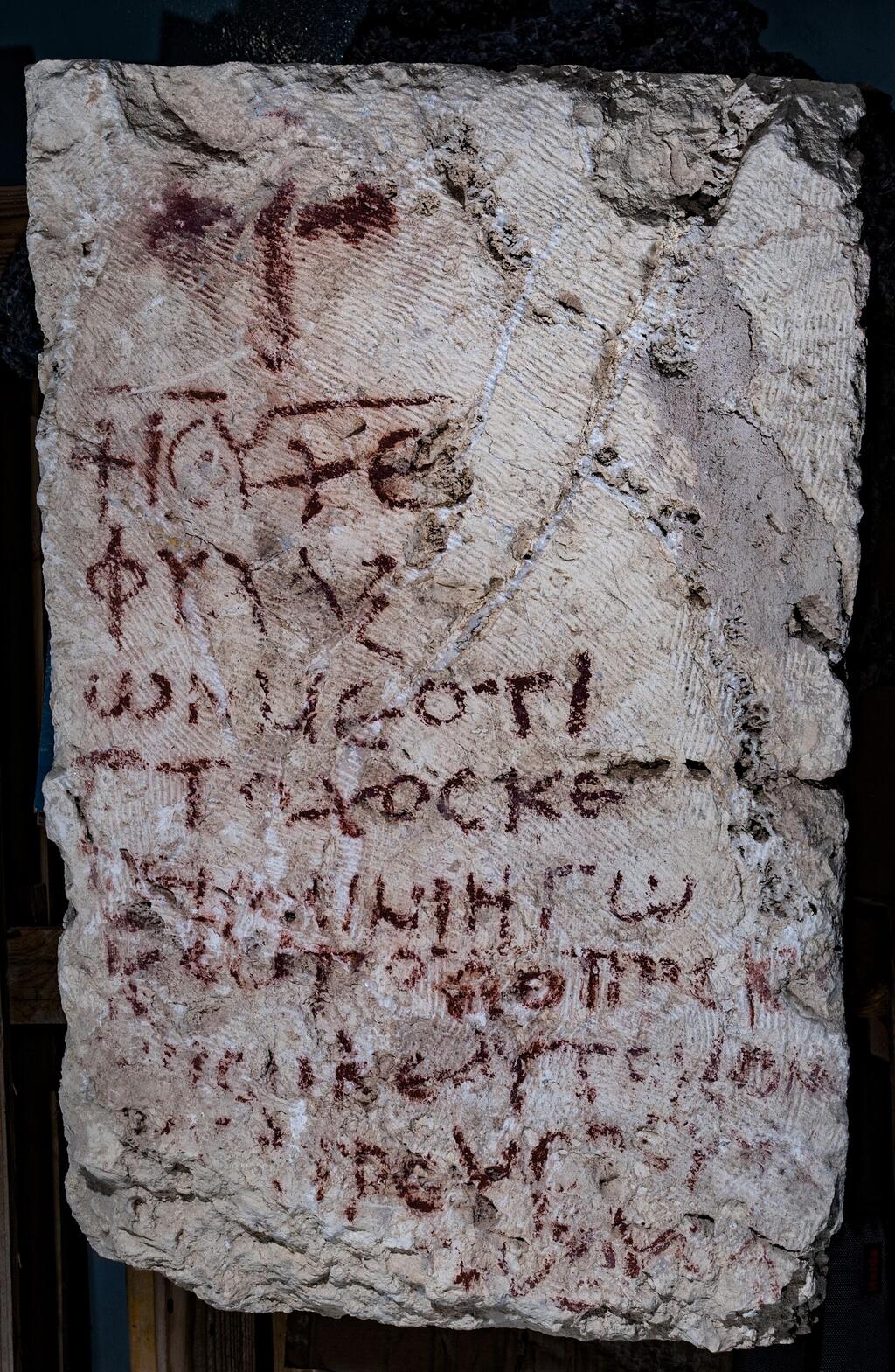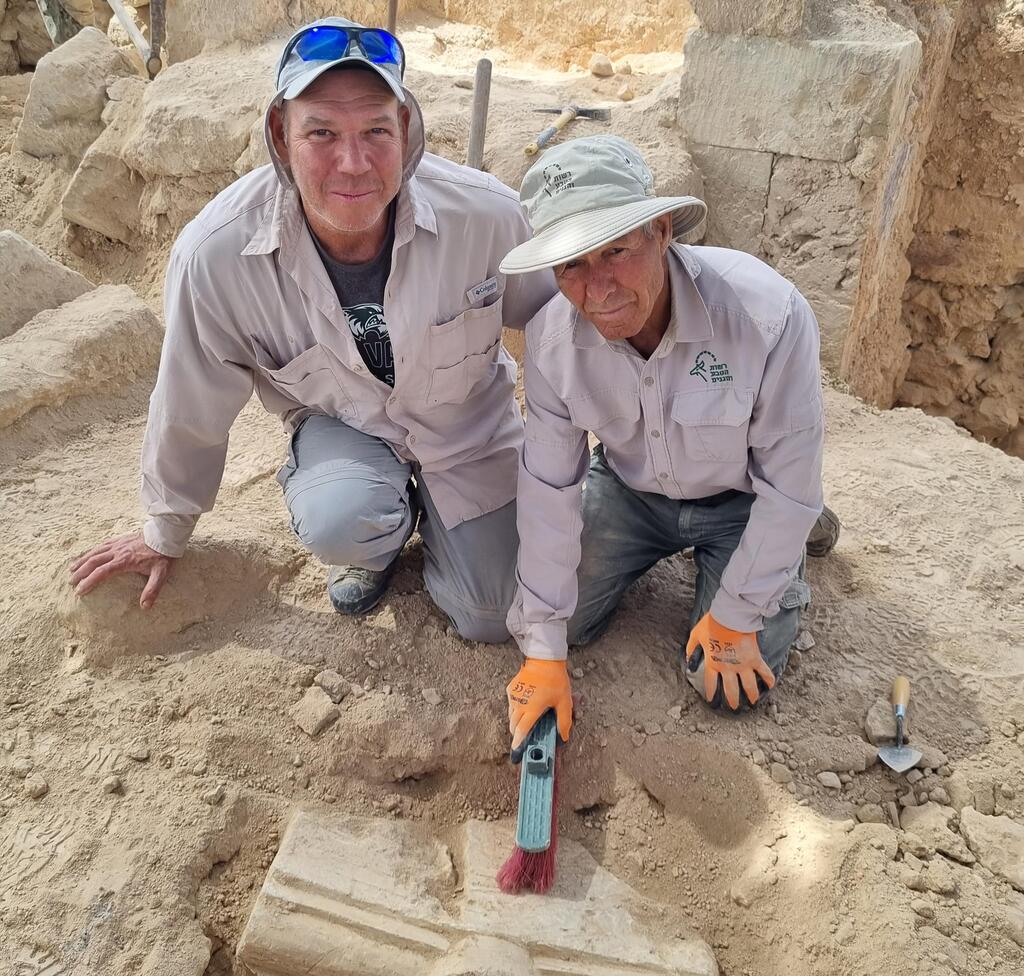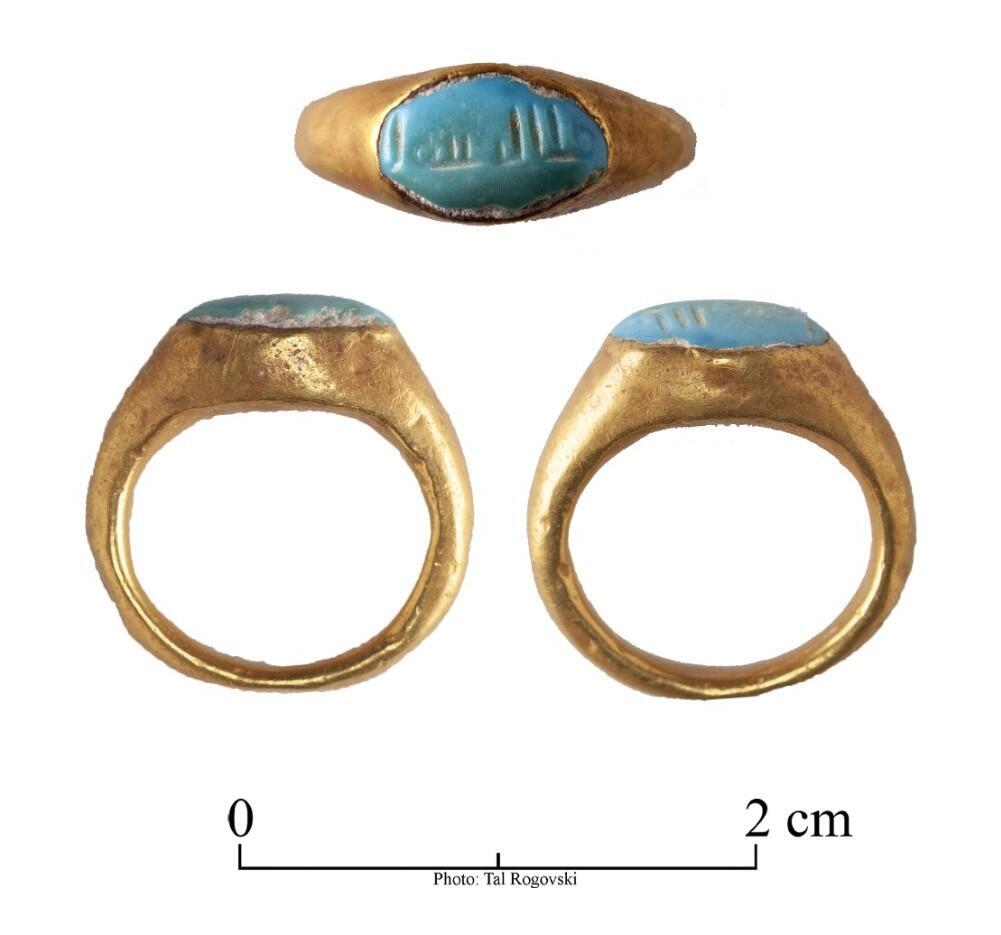The excavation site
A rare Byzantine-era inscription, that paraphrases part of Psalm 86, has been unearthed during excavations at the remote Second Temple-era Hyrcania Fortress in the Judean Desert. The excavation project, led by Dr. Oren Gutfeld and Michal Haber of the Hebrew University of Jerusalem, took place in response to increasing looting activities at the site.
Read more:
Perched atop an isolated hill, approximately 250 meters above the Horvat Hyrcania Valley, about 17 kilometers southeast of Jerusalem and 8 kilometers southwest of Kibbutz Kramim, lies the fortress of Horvat Hyrcania. Despite a few preliminary surveys and examinations conducted at the site over the years, no systematic archaeological excavation had been carried out until this season, primarily due to its location within a military zone and the challenging access routes.
The expedition focused its efforts on two main excavation areas. At the southwestern edge of the summit, sections of structures from the Second Temple period were uncovered, including a supporting wall and a watchtower.
"In these structures, we observe architectural elements reminiscent of the Herodian style, albeit on a somewhat smaller scale. It is possible that the work was even carried out by the same engineers and builders. It's no coincidence that we refer to Horvat Hyrcania as the 'Little Sister of Herodium," Gutfeld explained
In the northwestern part of the hill, the expedition uncovered a layer of rubble made up of construction stones that had collapsed from the upper floor into the basement hall of a wide building. Along the inner walls of the hall, artistry was incorporated – typically square columns affixed to the walls, facing each other, hinting at the existence of arches supporting the ceiling and the upper floor of the monastery, which did not survive.
During the excavation, on the simple plaster floor of the hall, a large building stone was discovered, painted in red, bearing nine or ten rows of text with a cross at the top. Gutfeld and Dr. Avner Ecker, their colleague from Bar-Ilan University, identified the script as Koine Greek, the language of the New Testament, and used the expertise of Ecker, an epigrapher. Upon initial reading (the end of the text is not legible), it was revealed to be a paraphrase of Psalm 86, "A Prayer of David."
"This is one of the most common psalms used in the ancient Christian liturgy. It appears that one of the monks drew a graffiti of the cross on the wall and underneath it, he penned a prayer he knew well," Ecker explained. "Based on the style of the script, the inscription dates back to the first half of the 6th century CE." He also noted, "Several grammatical errors in the transcription suggest that the writer did not speak Greek as his native tongue, but rather, he might have been a local, perhaps even a native of the region, and spoke Aramaic or another local language,"
Another inscription was uncovered beneath the layer of rubble in the hall, also made of building stone, but the analysis of what was written has not yet been completed.
"Apart from their historical and archaeological significance, these inscriptions hold great importance," according to Haber. "It should be emphasized that these inscriptions are actually the first to be discovered through systematic, documented excavation at the site. We are familiar with fragments of papyri from the early 1950s, some of which made it to the antiquities market and others were found at the site itself. However, in both cases, the exact source remains unknown."
In addition, members of the expedition discovered a small gold ring, measuring approximately 1 cm in diameter, suitable for a child. The ring is adorned with an oval turquoise stone and features an engraved inscription in Arabic Kufic script.
"The script style is indicative of the early Islamic period, during the Umayyad and Abbasid Caliphates in the 7th and 8th centuries CE," according to Nitzan Amitai-Preiss, an expert in Arabic epigraphy from the Hebrew University. "There is a unique aspect to the inscription where the first and third words are written in square script, possibly suggesting the use of the ring as a seal."
Amitai-Preiss deciphered the miniature inscription which translates to "What Allah willed."
Regarding the origin of the turquoise stone set in the ring, Amitai-Preiss said that: "During this period, turquoise likely came from Khorasan or Nishapur, which is in present-day Iran. The route the ring took on its way to Horvat Hyrcania remains a mystery, as does the identity of the person who wore it."







